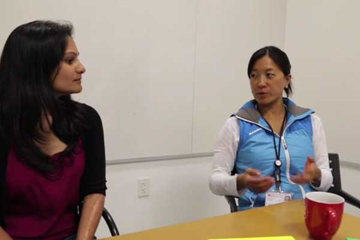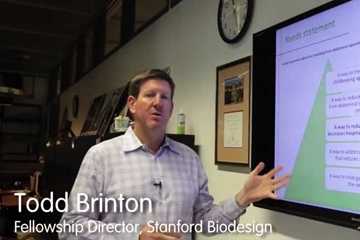Getting Started
When it is time to translate problems, populations, and outcomes into need statements, the steps below can help make this challenge more approachable.
Translate Problems, Populations, and Outcomes into Need Statements
What to Cover
Begin the process of translating what has been learned through observations into needs by asking a series of probing questions to reduce each problem to a simple, causal factor that results in an undesirable outcome. Next, evaluate what change in outcome or practice the problem calls for from the target user’s perspective and determine how it can be measured. Then, capture the essence of the need in a one-sentence statement that includes the problem, population, and desired outcome (if not obvious). Writing an effective need statement may take multiple iterations. Make every word count by carefully evaluating each one to ensure that it has been validated by observations and/or supporting research. Innovators should also challenge themselves to be certain that no assumptions, inferences, or other forms of judgment have found their way into the need statement.
Where to Look
- Primary Research – Perform more primary research with target users to validate desired outcomes (and the changes they necessitate).
- Business Publications – Review business publications in the field such as “Turn Customer Input into Innovation” by Anthony Ulwick (Harvard Business Review, January 2002; available for purchase) and “Customers as Innovators: A New Way to Create Value” by Stefan Thomke and Eric von Hippel (Harvard Business Review, April 2002) for help thinking about the customer’s perspective.
- Networking – Network with other innovators and review their need statements.
Confirm that Needs Are Solution Independent
What to Cover
Evaluate the need statement to confirm that there is no solution embedded within it, unless it is a fundamental component of an incremental need. This includes references to current solutions, as well as emerging possibilities. Any reference (no matter how subtle) to a specific solution or treatment path can introduce artificial constraints into future thinking. Be aware that any time a specific device is mentioned in a need statement (e.g., catheter, stent, scalpel), it is likely that the need has at least some portion of a preconceived solution embedded within it. Again, the only time this may be appropriate is for certain incremental needs but, even in these cases, the innovator should be careful not to unnecessarily constrain the need statement.
Where to Look
There are few external resources to assist in this exercise. Innovators must rely on their own critical analysis skills to perform this assessment.
Scope Each Need
What to Cover
Make sure the need has not been defined too narrowly by evaluating each need statement on a word-by-word basis. Too often, superfluous words included within the need statement end up limiting the range of possible solutions (and the market opportunity). Mitigate the risk of superseding needs by determining whether there are superior needs that may be more appropriate to pursue. However, be careful not to define the need too broadly. A need that has been over-generalized can result in a solution that does not effectively address the needs of the true target audience and may cause innovators to overestimate the size of the market opportunity later in the biodesign innovation process. If a superior need is subsequently chosen, follow the same process to verify the accuracy of the new need statement.
Where to Look
Innovators should refer back to observations and secondary research to perform this step. If necessary, additional observations can be scheduled. It can also be helpful to revisit the team’s strategic focus to ensure that the scope is aligned with its larger goals.
What to Cover
Clarify the language of each need with representative patients, physicians, and other stakeholders where it was identified. Confirm the need by getting other opinions from individuals at different centers or geographic locations.
Where to Look
Revisit observation sites to engage key stakeholders in validating needs. Leverage personal networks to gain access to contacts in other environments.
Categorize Needs and Define Need Criteria
What to Cover
Organize the need statements as incremental, blue sky, or mixed to help raise awareness of the characteristics of the needs identified through observations. Depending on the innovator’s strategic focus, there may be other categories that can be used to help bring organizational clarity and direction in seeking to address the identified needs. Then, use the detailed information collected through observations to start a list of the need criteria that are important to the target population for each need. Consider issues such as where, when, and by whom the solution is most likely to be used, as well as ease of use, time of use, duration of use, cost, and other factors that could potentially affect its adoption. These assessments should be made based on the behaviors directly observed through the observation process.
Where to Look
Needs can be categorized based on the innovator’s understanding of the needs to date. To define need criteria, they should refer back to their observations and secondary research.



